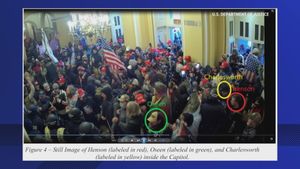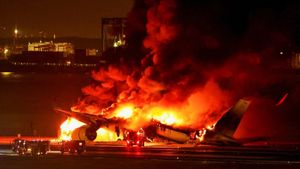Residents of Duarte and Azusa are expressing their concerns over the United States Environmental Protection Agency's (EPA) decision to use Lario Park, located in Irwindale, as a site for processing hazardous waste from the recent wildfires. With the flames from the Eaton and Palisades fires still fresh, community members are worried about the potential for environmental contamination. Ceci Carroll, a long-time resident of Duarte and former school board member, articulated her fears at a recent town hall meeting, saying, "I’m concerned about the community and also the school districts here, where we have children."
The wildfires, which began on January 7, turned thousands of structures to ash and released hazardous materials such as paints, pesticides, and lithium-ion batteries. Residents are raising alarms about the dangers to air quality and groundwater, particularly because their primarily Latino neighborhoods are already fighting against higher-than-average levels of pollution. Los Angeles County Supervisor Hilda Solis stated, "The removal of these materials should not come at the cost of creating a toxic environment for communities already disproportionately impacted by pollution."
At the town hall meeting, which attracted hundreds of concerned citizens, local officials joined residents in demanding transparency about how the site was chosen. Many were frustrated by the lack of communication from the EPA before waste processing commenced. Questions arose concerning safety measures and logistics, with residents questioning why the agency opted to transport hazardous waste 15 miles from the burn zone to Lario Park. The cries of opposition were loud and clear, with residents chanting, "Shut it down!" and voicing calls to keep the waste away from their communities.
EPA coordinator Tara Fitzgerald attempted to calm fears and defend the agency’s track record. "We did the exact same thing for the Woolsey, Santa Rosa, and Napa fires, and we did not have any impacts to the community during the entire process," she said. She communicated the EPA's commitment to safety by outlining the agency's plans for regular air monitoring, soil sampling, and the implementation of dust-control measures. Vehicles transporting the waste will utilize surface streets instead of freeways to minimize hazards.
Despite the reassurance from the EPA, concerns about the unprecedented scale of these wildfires linger among the community members. The Eaton and Palisades fires have ravaged urban spaces at the largest recorded rate within California, creating fears about whether existing precautions would hold up. Sanjay Mohanty, UCLA associate professor, noted the geological barriers to groundwater contamination. "There’s several feet of soil... and even if there is leeching, they would not migrate far..." he explained, but residents remained skeptical.
During the heated discussion, Laura Jasso, another Duarte resident, expressed frustrations about the perceived lack of transparency surrounding site selection and operational protocols. "It’s hard to have confidence when they’ve really done this behind our backs," she stated, reflecting the sentiment expressed throughout the gathering. Community members assert their right to be informed about the handling of hazardous materials. Rachael Jones, director at the UCLA Center for Occupational and Environmental Health, reiterated this necessity, saying, "The community has the right to know."
Many residents echoed the sentiment conveyed by Jasso, expressing determination to continue advocating for their safety and community health. "But the fact is, it’s here right now. And we have to just acknowledge the safety of our students, the concerns of our families," she said. The community remains on alert, prepared to hold the EPA accountable as hazardous waste processing continues. Their resistance highlights the intersection of environmental justice and community health, underscoring their commitment to safeguard their neighborhoods against what they perceive as additional risks from hazardous waste.
Efforts by residents and local officials to address these pressing concerns showcase the growing need for transparency and community engagement, particularly following events as devastating as the recent wildfires. With the community energized and vigilant, they assert their right to advocate for safety and accountability.



